The best private islands in the UK and Ireland you can buy right now
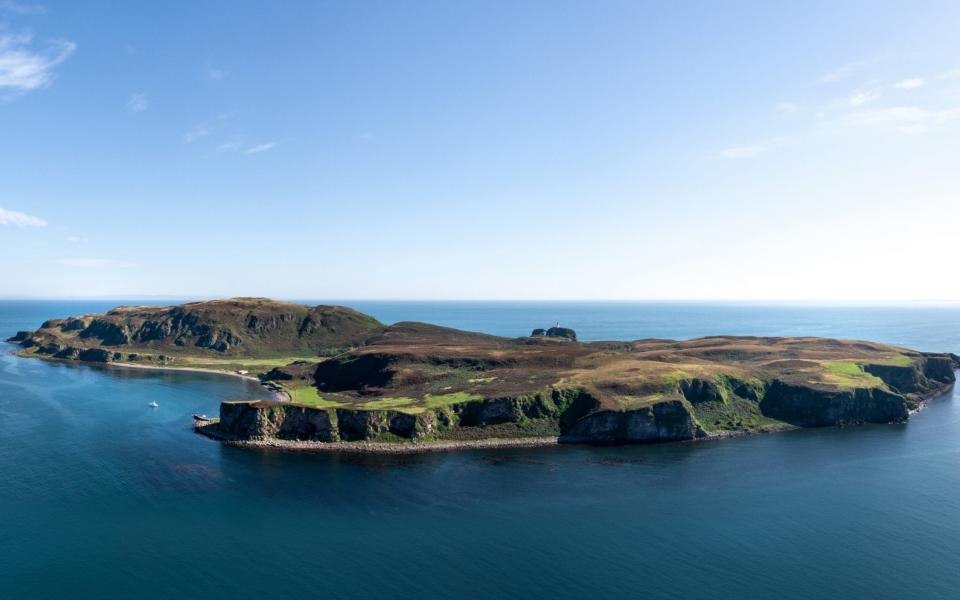
Imagine looking out of your house and everything you see belongs to you: no annoying neighbours, no traffic, no one parking in front of your door. For the handful of those who own a private island around the UK and Ireland, this is a reality.
Last week, Mullagrach, the northernmost island in the Summer Isles archipelago in the Highlands, was put on the market for the bargain price of £500,000. A buyer would need to pay in cash – it’s almost impossible to get a mortgage to buy an island – but for half a million pounds they would become the proud owner of a modest heather-roofed cabin and 89 craggy acres filled with birds (complete with 4G).
In the UK and Ireland, only a handful of islands are currently on the market. Tom Stewart-Moore, of Knight Frank, says about a dozen become available every year.
“It normally creates a lot of buzz,” he says. “But it takes a lot of effort to see them – it normally involves a plane, a hire car, a private chartered boat or a helicopter.”
Buyers are usually people like entrepreneurs or celebrities, and businesses may want to use islands to host wellness retreats.
“Some people want something private, something they might use for a few weeks a year in summer months,” says Stewart-Moore. One estate agent notes that some of the more eccentric buyers have to be “politely talked down” from building James Bond-style fortresses on their island, lest they incur the wrath of planning authorities.
For the super-rich, sentimentality and fond memories are excuse enough to stump up millions for a private island.
“People buy islands because they used to go snorkelling there, or had a picnic there once, and they think it would be nice to own it,” adds Stewart-Moore. “It’s like fine art – people just like to own things.”
Cameron Ewer, of Savills estate agents, which currently has three private islands up for sale, says what’s on offer can range from “a clump of trees for £80,000” to a small estate worth millions.
“They’re tax-efficient assets because they’re just land, so from an inheritance tax perspective they’re very attractive,” he says. Most islands can be given over to farming and as such can be passed down free from inheritance tax. Due to their finite supply, their value appreciates at an average value of 10pc a year, according to Vladi Private Islands.
Stewart-Moore says private islands are often held within families for generations, hence why so few of them come on the market each year. “Smaller islands may have been split off from larger estates and the next generation says, ‘mum and dad, I don’t want an island’,” he adds.
Most buyers are Americans hoping to connect with Scottish ancestry. “There’s a slight misconception that owning an island automatically confers a title,” Ewer says. “But it doesn’t. These people are just looking for a heritage connection.”
How much an island sells for depends largely on what its owner can build on it – or if they can build at all. “You’re not going to spend half a million on an island and sleep there in a tent,” says Farhad Vladi, chief executive of Vladi Private Islands.
“The ones with a house or villa on it, you’re talking in the millions – but there aren’t many islands with a development on the market.”
Local authority planning rules extend to islands and Vladi says the rule of thumb is that if there are ruins or the basement of a dwelling on an island, a buyer will have more luck getting permission to build what they want. But if the island is untouched it is likely to stay that way. “There is no law that forbids building, but the Government or council approach is that they don’t want to grant permits,” he says. “They want to protect nature.”
There are workarounds, he continues. Some island owners are happy to attach modern “floating villas” (essentially a house that floats on the water like a barge) rather than spoil the landscape. “I sold Johnny Depp an island in the Bahamas and he didn’t touch it,” says Vladi. “He just stayed on his yacht and left the island alone.”
In any case, Vladi says the appeal of owning an island is more existential than simple homeownership. “There’s a lot of energy on an island. It’s like you can feel the water all around you,” he says. “It’s like a pharmacy for the soul.”
The private islands in the UK and Ireland you can buy right now
Torsa, Argyll, Scotland
Offers over £1.5m (via Savills)
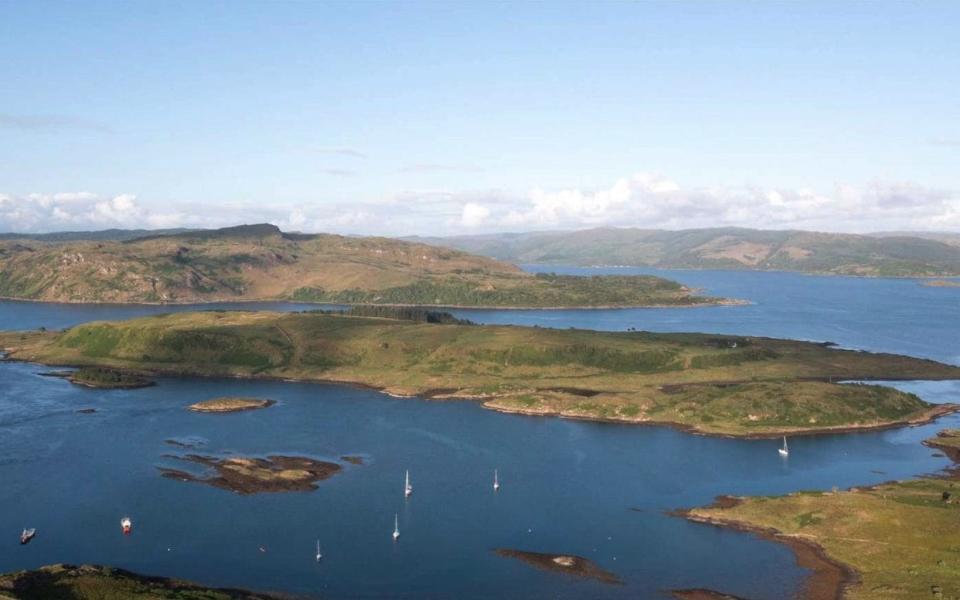
Surrounded by “stunning West Coast scenery and sheltered sailing waters”, the island of Torsa is about half a mile wide and 1.2 miles long. Its £1.5m price tag is so high largely because it already has a three-bedroom period farmhouse on it.
The listing claims Torsa is a rarity even by private island standards as it is readily accessible from the Scottish mainland, with sheltered anchorage and mooring. The stone farm building has “development potential”, Savills adds.
The farmhouse and the property have been run as successful businesses in the past and the island also has permanent grazing and woodland.
No Man’s Land Fort, Solent, Isle of Wight
Guide price: £1m (via Savills)
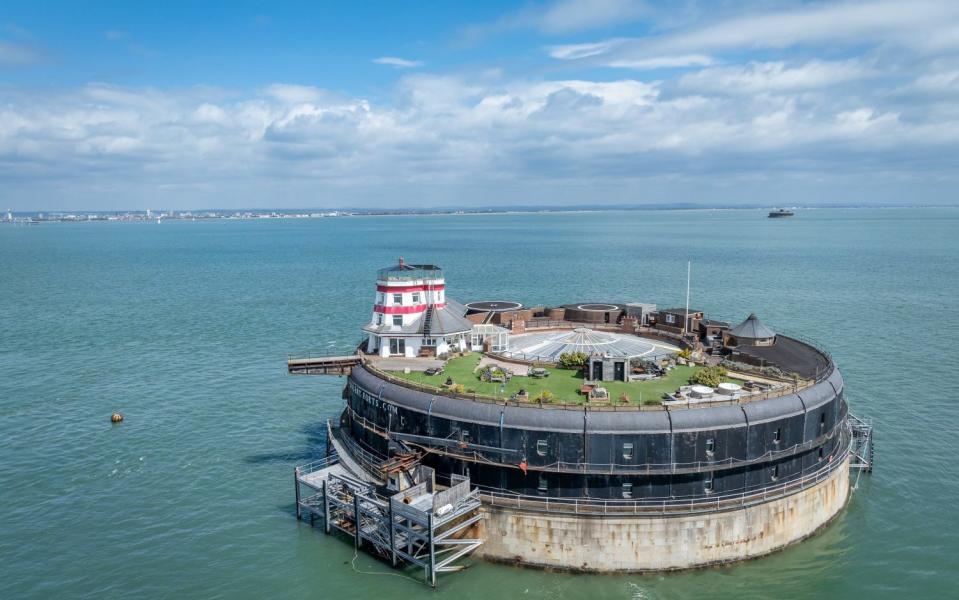
For a cool £1m, you could own a Victorian island fort. The 900 sq ft development was originally built in 1880. Reports claim the fort was used in the Second World War to defend the Portsmouth dockyards, two miles to the south – those chosen to man the site were deliberately singled out for their inability to swim to avoid escape attempts.
Now the fort has been transformed into a “self-contained luxury private accommodation” complete with 23 rooms with en-suite bathrooms, crew quarters, multiple bars and restaurants and a number of multi-purpose rooms.
The site is currently being used as a hotel and event space and even comes with a helipad. “You could buy all as it is and be ready to move straight in,” Savills says.
Spitbank Fort, Solent, Isle of Wight
Guide price: £1m (via Savills)
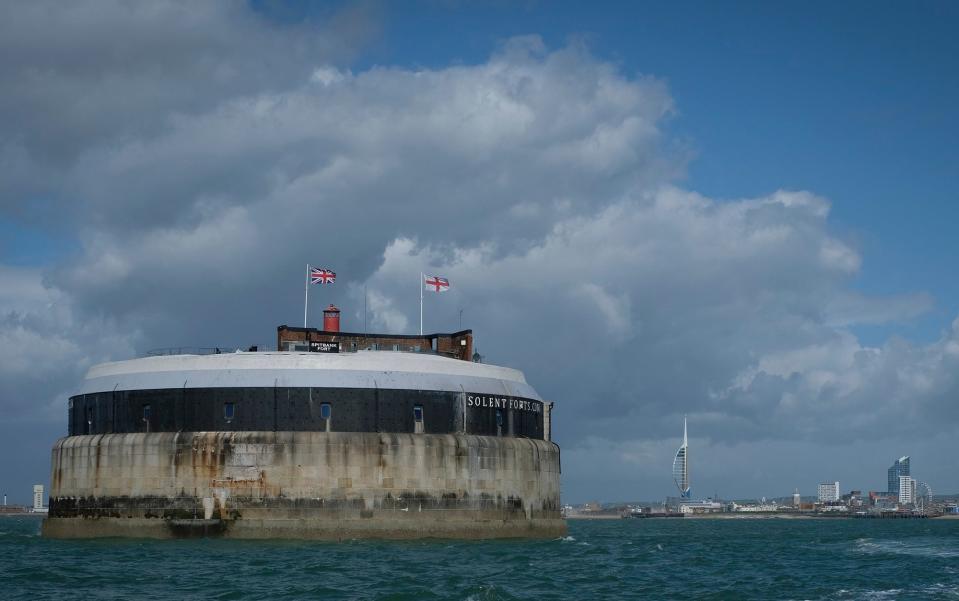
Slightly smaller than its counterpart No Man’s Land Fort, Spitbank Fort was originally built in 1878 as a further line of defence for invading ships.
Described as a “formidable granite island”, Spitbank Fort offers easy access to the entire south coast of Hampshire and Dorset – and the Isle of Wight is just three miles south east. It features upper walls fortified with thick armour plating, “a testament to its resilience against high-explosive rounds”, the listing claims.
The fort currently functions as a luxury hotel with nine guest suites, staff accommodation and event spaces.
Middle Calf Island, Ireland
Price on request (via Vladi Private Islands)
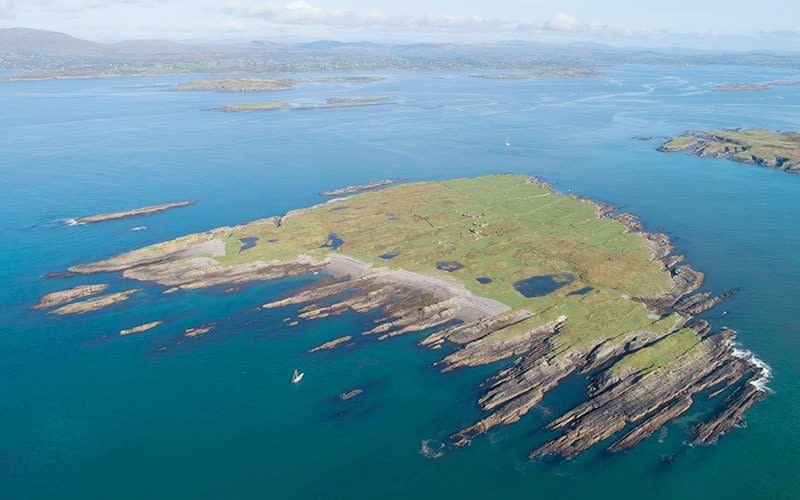
Unlike the islands offered by Savills, Middle Calf Island, located between West Calf and East Calf Islands off the west Cork coast, offers 64 acres of uninhabited land. The only evidence of human existence on the island is the ruins of four dwellings and outbuildings – good news for a prospective buyer hoping to secure planning permission.
According to Vladi Private Islands, six families lived a self-sufficient life on the island and a school was set up there in 1835, which was also attended by pupils from neighbouring communities. About 40 people lived on the island in 1841, and the last family left it for good in 1937. Now, the island is home to a herd of around 25 Kerry Bog ponies, which graze year-round.
Shore Island, Ireland
Price on request (via Vladi Private Islands)
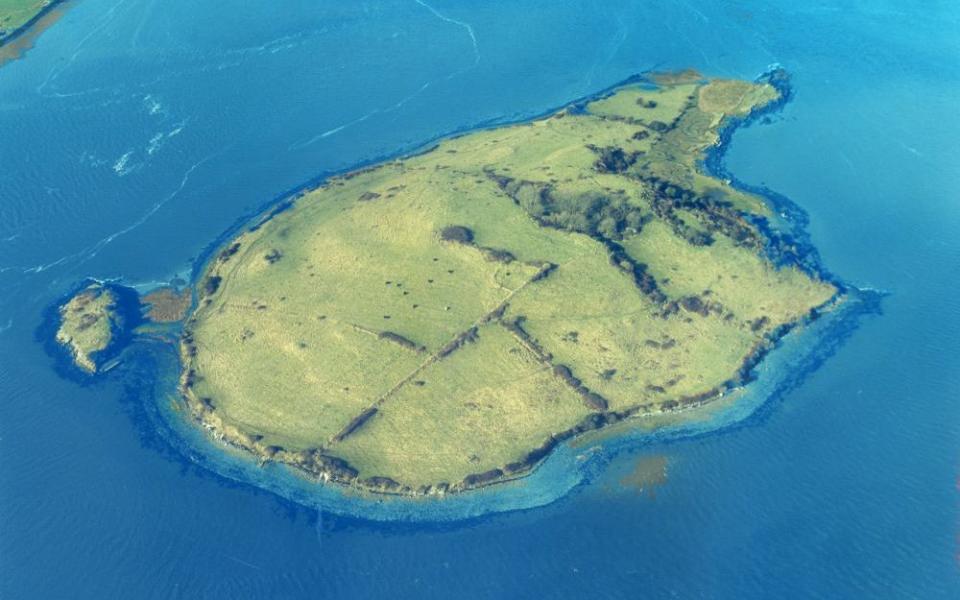
Shore Island is about half the size of Middle Calf Island, at 30 acres. Located in the Shannon Estuary – three miles from Shannon airport – the island is known for being a good salmon fishing spot, and comes with a small pier for that very purpose.
Currently, the island is used for cattle grazing, but Vladi Private Islands’ listing claims it would not be difficult to get planning permission to build a house there, as there is evidence of one having been built there in the past.
Sanda Island, Argyll, Scotland
Offers over £2.5m (via Knight Frank)
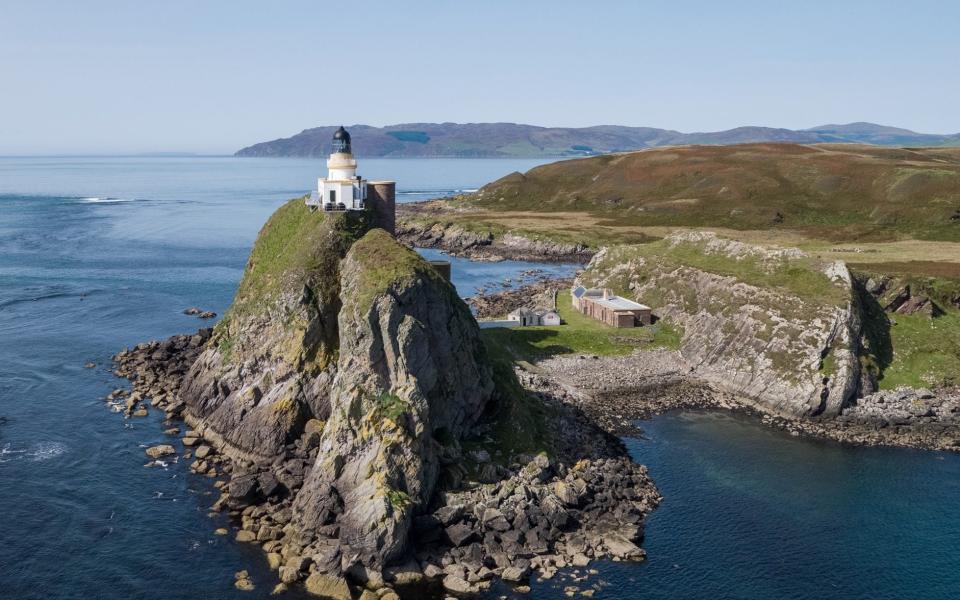
If your budget can stretch to it, and you want more acres for your money, then you might be more interested in this group of islands off the coast of the Kintyre Peninsula, 13 miles to the south of Campeltown. Sanda Island has seven houses, a tavern, a slipway, a lochan and sandy beaches. The islands are remote, but don’t worry – there is also a helipad.
For the £2.5m price tag, the buyer will also acquire the neighbouring smaller islands of Sheep and Glunimore. The seven residential properties on Sanda Island can accommodate 26 people between them and have all been renovated by the island’s current owners – they have new shower rooms and underfloor heating.

 Yahoo Finance
Yahoo Finance 